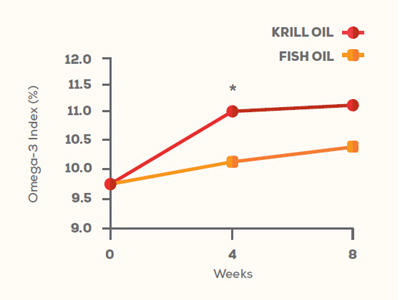Optimizing The Omega-3 Index with Krill Oil
The Omega-3 Index offers a window into a person’s general state of health. It is a reliable diagnostic tool that presents the combined EPA and DHA concentration as a percentage of total fatty acids in blood. By recording the percentage concentration of omega-3s in red blood cells, the Omega-3 Index provides a useful indication of a person’s long-term intake of these fatty acids.
Because the Omega-3 Index reflects the incorporation of omega-3s in cell membranes, which provide numerous health benefits, the Omega-3 Index is suggested to correlate with both the health of the body and its omega-3 status. In other words, an improvement of the ratio of EPA and DHA to other fatty acids in the cell membrane is a strong indicator of a person’ state of health.
The graph shows that the participants in study started out with an average omega-3 index of 2.0, a relatively low value. After 8 weeks with daily intake of 2g Krill Oil, the index increased to 4.5, or up to 125 %.
Krillan™ has been shown to increase the Omega-3 Index faster and more efficiently compared to other marine and algal sources.
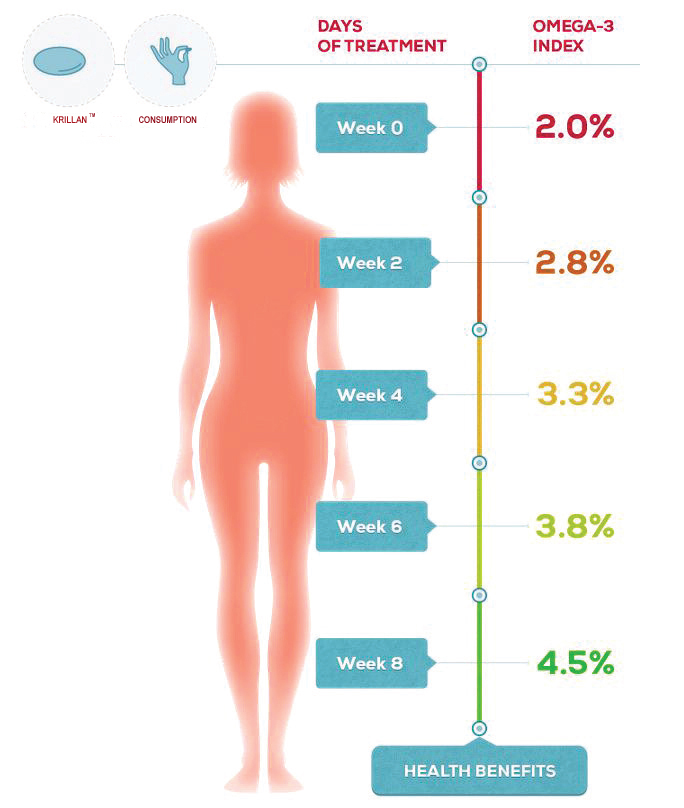

Anatomy of the Omega-3 index
Definition of the Omega-3 Index
The Omega-3 Index that has been proposed as a novel biomarker for cardiovascular risk is defined as the percentage of EPA and DHA in red blood cell (RBC) fatty acids. The increased levels of the Omega-3 Index after supplementation have been shown to directly correlate with EPA and DHA levels in human cardiac tissue
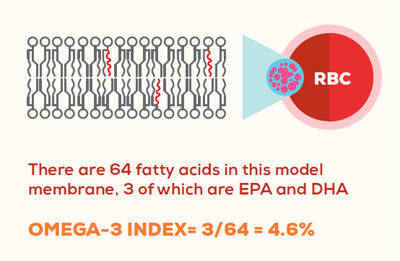

Target zones for the Omega-3 Index
The Omega-3 Index is believed to mirror overall tissue EPA and DHA levels and therefore a person’s health status. An omega-3 index of 8% or above is considered optimal, while a low Omega-3 Index indicates a higher risk of sudden cardiac problems.
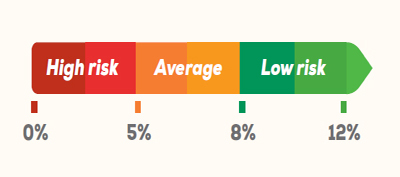

Subjects receiving krill oil increased their Omega-3 Index 70%
The results of the study showed that krill oil increased the Omega-3 Index significantly more than fish oil after 8 weeks of supplementation. In fact, krill oil increased the Omega-3 Index about 70% more than fish oil at the end of study after dose adjustment between the two treatment groups.
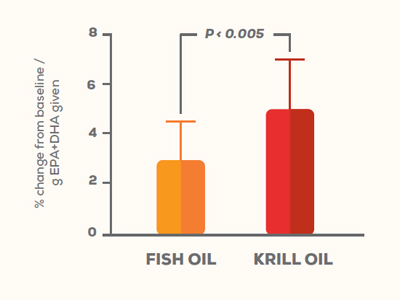

% increase in the Omega-3 Index from baseline after 12 weeks treatment with placebo, 0.5, 1, 2 or 4 g krill oil
The investigation of the effect of 12 weeks daily krill intake in volunteers with “borderline high” or “high” blood triglyceride levels. The administration of krill oil had a statistically significant reduction in serum triglycerides.


Change in the Omega-3 Index in subjects with a very high Omega-3 Index.
Heart disease patients with a very high starting Omega-3 Index (mean of 9.8%), krill oil was able to increase the Omega-3 Index higher than those taking fish oil. Eight weeks of daily supplementation with 2 grams of krill oil improved the Omega-3 Index more than with 2 grams fish oil..
